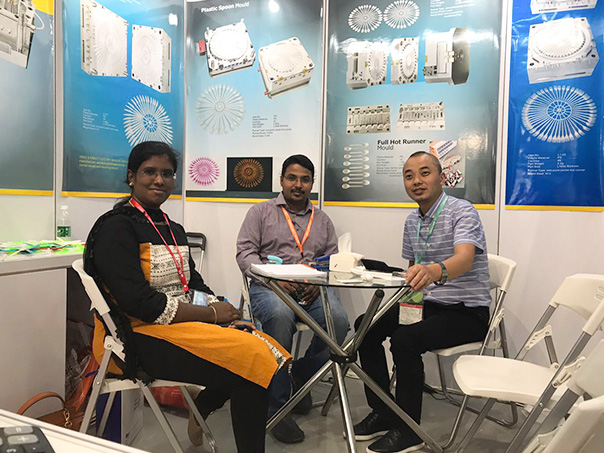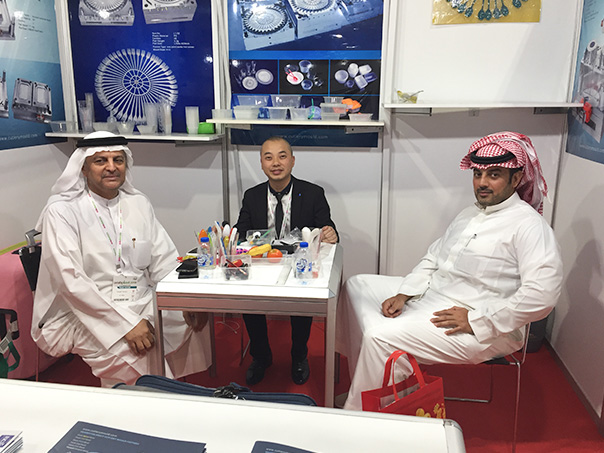Reminders on injection molded containers
- Categories:Industry news
- Time of issue:2021-07-28 14:52
- Views:
(Summary description)Injection molding is to inject molten plastic into a lower temperature closed mold through a nozzle under high pressure. Thermoplastics and thermosetting plastics can be injection molded and can be used to make various box-type packaging containers, such as various turnover boxes and small boxes. For box packaging containers, the following aspects should be considered in the structural design:
1. The wall thickness of the container
1. Thickness: The wall thickness of the container is mainly determined by its use, plastic product type, structure, etc. For different thermoplastic engineering plastics, it is generally considered that the time should not be less than 0.6mm, and 2~4mm is often selected; for other thermoset plastics, due to their poor fluidity management, the thickness should be larger, small parts are 1.6~2.5 ram, and large parts It is 3.2~8mm, not more than 10mm.
2. Uniformity: The uniformity of the wall thickness has a great influence on the quality of the container. If the thickness difference is too large, the shrinkage will be uneven, causing defects such as deformation and cracks. Therefore, the equal-thickness structure should be used as much as possible in the structural design.
3. Smooth transition: In some containers, certain parts must have different thicknesses due to structural requirements, such as the turning point of the container. This should be used for smooth transition to avoid sudden changes in cross-section.
Second, improve stiffness
1. Add stiffeners: stiffeners can enhance the strength and rigidity of the container. The basic requirements for stiffeners are that the number of stiffeners should be large, the wall thickness should be thin, the height should be short, there should be sufficient slope, the bottom of the stiffener should be arc-shaped transition, and the direction of the stiffener should be consistent with the direction of material flow to improve The toughness of plastic.
2. Improve the shape: the box-shaped container is mostly a rectangular thin-walled piece, which is prone to deformation. Various methods should be adopted to enhance the four side walls of the container slightly outward to improve the rigidity of the system; Reinforcement; edge reinforcement at the edge of the container.
3. Reasonable support: The bottom area of the box container is large, but it is not suitable to use the entire bottom of the container as a support. Since the bottom of the box body is slightly bent, the bracket should be changed to a wire bracket or a point bracket. The convex side bracket (ie, the wire bracket) raises the tripod (ie, the point bracket), and the height is generally 0.3-0.5 mm.
4. Corner: The corner is the intersection of two or three faces. Regardless of the shape of the container, rounded corners must be used at the intersection of all surfaces, which can greatly improve the rigidity of the container, improve the filling of the plastic, disperse stress, and reduce deformation.
Third, the draft angle
In order to facilitate the demolding of the molded part, it is necessary to fully consider the proper demolding angle when designing the pressure vessel. If the demolding slope is too small, demolding is difficult, and the surface of the container is damaged; if it is too large, the calculation accuracy of the main dimensions will be affected.
The demolding angle varies with the shape of the plastic part, plastic type, mold structure, surface roughness, injection molding method, etc.
Reminders on injection molded containers
(Summary description)Injection molding is to inject molten plastic into a lower temperature closed mold through a nozzle under high pressure. Thermoplastics and thermosetting plastics can be injection molded and can be used to make various box-type packaging containers, such as various turnover boxes and small boxes. For box packaging containers, the following aspects should be considered in the structural design:
1. The wall thickness of the container
1. Thickness: The wall thickness of the container is mainly determined by its use, plastic product type, structure, etc. For different thermoplastic engineering plastics, it is generally considered that the time should not be less than 0.6mm, and 2~4mm is often selected; for other thermoset plastics, due to their poor fluidity management, the thickness should be larger, small parts are 1.6~2.5 ram, and large parts It is 3.2~8mm, not more than 10mm.
2. Uniformity: The uniformity of the wall thickness has a great influence on the quality of the container. If the thickness difference is too large, the shrinkage will be uneven, causing defects such as deformation and cracks. Therefore, the equal-thickness structure should be used as much as possible in the structural design.
3. Smooth transition: In some containers, certain parts must have different thicknesses due to structural requirements, such as the turning point of the container. This should be used for smooth transition to avoid sudden changes in cross-section.
Second, improve stiffness
1. Add stiffeners: stiffeners can enhance the strength and rigidity of the container. The basic requirements for stiffeners are that the number of stiffeners should be large, the wall thickness should be thin, the height should be short, there should be sufficient slope, the bottom of the stiffener should be arc-shaped transition, and the direction of the stiffener should be consistent with the direction of material flow to improve The toughness of plastic.
2. Improve the shape: the box-shaped container is mostly a rectangular thin-walled piece, which is prone to deformation. Various methods should be adopted to enhance the four side walls of the container slightly outward to improve the rigidity of the system; Reinforcement; edge reinforcement at the edge of the container.
3. Reasonable support: The bottom area of the box container is large, but it is not suitable to use the entire bottom of the container as a support. Since the bottom of the box body is slightly bent, the bracket should be changed to a wire bracket or a point bracket. The convex side bracket (ie, the wire bracket) raises the tripod (ie, the point bracket), and the height is generally 0.3-0.5 mm.
4. Corner: The corner is the intersection of two or three faces. Regardless of the shape of the container, rounded corners must be used at the intersection of all surfaces, which can greatly improve the rigidity of the container, improve the filling of the plastic, disperse stress, and reduce deformation.
Third, the draft angle
In order to facilitate the demolding of the molded part, it is necessary to fully consider the proper demolding angle when designing the pressure vessel. If the demolding slope is too small, demolding is difficult, and the surface of the container is damaged; if it is too large, the calculation accuracy of the main dimensions will be affected.
The demolding angle varies with the shape of the plastic part, plastic type, mold structure, surface roughness, injection molding method, etc.
- Categories:Industry news
- Time of issue:2021-07-28 14:52
- Views:
Injection molding is to inject molten plastic into a lower temperature closed mold through a nozzle under high pressure. Thermoplastics and thermosetting plastics can be injection molded and can be used to make various box-type packaging containers, such as various turnover boxes and small boxes. For box packaging containers, the following aspects should be considered in the structural design:
1. The wall thickness of the container
1. Thickness: The wall thickness of the container is mainly determined by its use, plastic product type, structure, etc. For different thermoplastic engineering plastics, it is generally considered that the time should not be less than 0.6mm, and 2~4mm is often selected; for other thermoset plastics, due to their poor fluidity management, the thickness should be larger, small parts are 1.6~2.5 ram, and large parts It is 3.2~8mm, not more than 10mm.
2. Uniformity: The uniformity of the wall thickness has a great influence on the quality of the container. If the thickness difference is too large, the shrinkage will be uneven, causing defects such as deformation and cracks. Therefore, the equal-thickness structure should be used as much as possible in the structural design.
3. Smooth transition: In some containers, certain parts must have different thicknesses due to structural requirements, such as the turning point of the container. This should be used for smooth transition to avoid sudden changes in cross-section.
Second, improve stiffness
1. Add stiffeners: stiffeners can enhance the strength and rigidity of the container. The basic requirements for stiffeners are that the number of stiffeners should be large, the wall thickness should be thin, the height should be short, there should be sufficient slope, the bottom of the stiffener should be arc-shaped transition, and the direction of the stiffener should be consistent with the direction of material flow to improve The toughness of plastic.
2. Improve the shape: the box-shaped container is mostly a rectangular thin-walled piece, which is prone to deformation. Various methods should be adopted to enhance the four side walls of the container slightly outward to improve the rigidity of the system; Reinforcement; edge reinforcement at the edge of the container.
3. Reasonable support: The bottom area of the box container is large, but it is not suitable to use the entire bottom of the container as a support. Since the bottom of the box body is slightly bent, the bracket should be changed to a wire bracket or a point bracket. The convex side bracket (ie, the wire bracket) raises the tripod (ie, the point bracket), and the height is generally 0.3-0.5 mm.
4. Corner: The corner is the intersection of two or three faces. Regardless of the shape of the container, rounded corners must be used at the intersection of all surfaces, which can greatly improve the rigidity of the container, improve the filling of the plastic, disperse stress, and reduce deformation.
Third, the draft angle
In order to facilitate the demolding of the molded part, it is necessary to fully consider the proper demolding angle when designing the pressure vessel. If the demolding slope is too small, demolding is difficult, and the surface of the container is damaged; if it is too large, the calculation accuracy of the main dimensions will be affected.
The demolding angle varies with the shape of the plastic part, plastic type, mold structure, surface roughness, injection molding method, etc.
Scan the QR code to read on your phone
Taizhou Huangyan Erect Mould Co., Ltd.
台州市黄岩艾瑞克模具有限公司
![]() Company email: sales@erectmould.com
Company email: sales@erectmould.com
![]() Address: No 20, Maofeng Road, Xinqian, Huangyan, Taizhou, Zhejiang, China
Address: No 20, Maofeng Road, Xinqian, Huangyan, Taizhou, Zhejiang, China
![]() 地址: 中国浙江台州黄岩新前茂丰路20号
地址: 中国浙江台州黄岩新前茂丰路20号

whats app

Scan to add wechat

scan
Into the website
© Taizhou Huangyan Erect Mould Co., Ltd Co., Ltd. All Rights Resserved. 浙ICP备2021022484号 Powered by 300.cn









